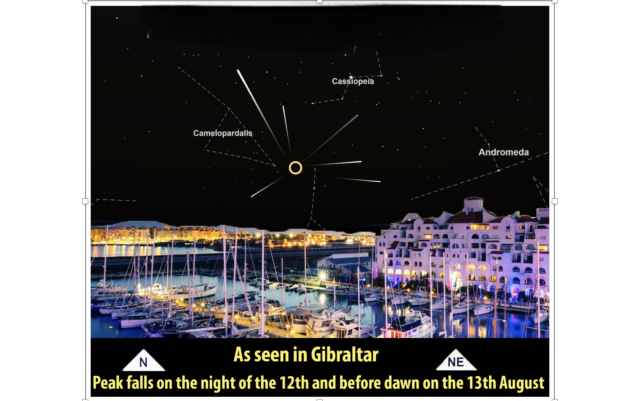Perseid meteor shower to peak over Gibraltar skies on August 12–13
The annual Perseid meteor shower is currently active, with peak activity expected between August 12 and 13. During this time, observers in Gibraltar may see as many as 40 meteors per hour from dark locations, although visibility will be lower in light-polluted areas.
The Perseids, known for their brightness and frequent fireballs, are one of the most prominent meteor showers in the Northern Hemisphere. The meteors are fragments of debris left behind by Comet Swift-Tuttle, which last passed through the inner solar system in 1992 and is not expected to return until 2126. As the Earth moves through this debris field each August, particles collide with the atmosphere at speeds of up to 60 kilometres per second, producing visible streaks of light.

The average meteor streak is about a metre wide and spans tens of kilometres across the sky. These meteors appear to radiate from the constellation Perseus, which gives the shower its name.
Historically, the Perseids have been observed for centuries. The earliest known record dates back to AD 36 in China, although the shower was not officially recognised until the 1830s. In earlier centuries, the meteors were referred to as the “Tears of St Lawrence” by Catholic observers, in reference to the martyrdom of the saint on August 10, AD 258.
To view the meteor shower, observers are advised to find a dark area away from artificial lighting and allow their eyes to adjust to the darkness. The best direction to look is towards the north-east, approximately two-thirds of the way up from the horizon.
Further updates are available from the Gibraltar Astronomical Society on Facebook.









